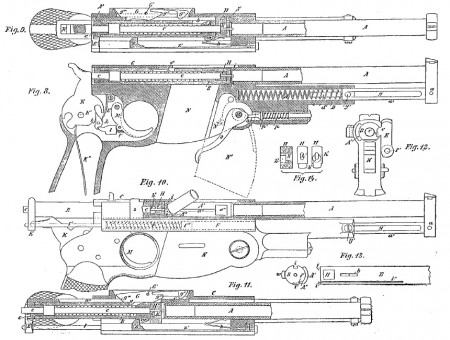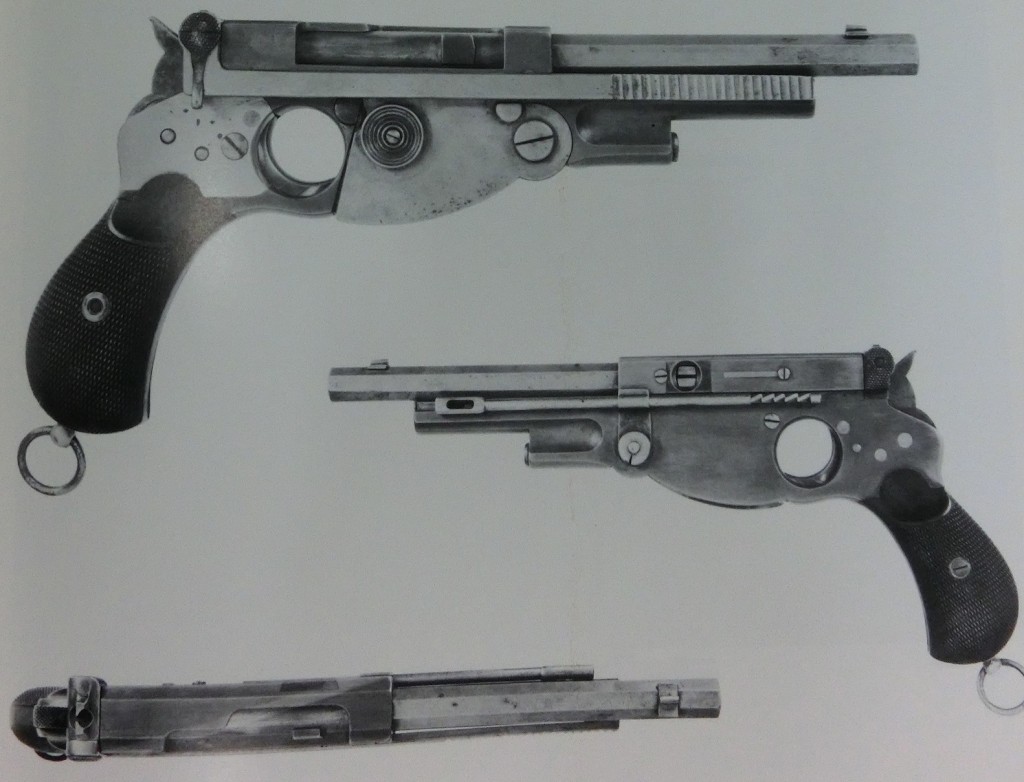The story of the Bergmann also has an interesting element of credit to it, as Theodore Bergmann was never a gun designer. Instead, Bergmann was a businessman and industrialist. Born in Spessartdorf Germany in 1850, Bergmann left his family’s innkeeping business to follow a calling in the metalworking industry.
By the age of 19, Bergmann was a managing partner of the Gaggenau Ironworks, which built a wide variety of products, from structural girders to household stoves and also bicycles and airguns. Under Bergmann’s administration, the firm expanded its production of airguns (including licensing a design from the American Henry Quackenbush, whose guns deserve a place on Forgotten Weapons, and who invented the extension ladder at age 16) and also moved into rifles and gun barrels. This put him in a position to be approached by inventors looking for a company to produce new designs – which is exactly what happened.

In 1892, a Hungarian watchmaker by the name of Otto Brauwetter was granted a patent, in conjunction with the Gaggenau company (later to become Bergmanns Industriewerke GmbH), for a self loading firearm mechanism. The assignment of the Gaggenau company to the patent suggests that Bergmann saw potential in the design, and had been willing to invest company time and resources into Brauwetter’s work. The fate of Brauwetter himself with the design is unclear – he seems to disappear from records after that first patent. Instead, the man whom Bergmann finds to refine the patent into a viable production pistol is none other than Louis Schmeisser, who would become a household name in European arms design.

Schmeisser took Brauwetter’s patent and produced the 1893 model pistol from it. The design was a delayed blowback mechanism, using an inclined wedge alongside the barrel.The loading system consisted of a 5-round clip that was inserted in the right side of the pistol after opening a swinging magazine cover plate (this system would feature in several following Bergmann iterations). Interestingly, the pistol also came with its own short cleaning rod stored on the left side under the barrel.
It appears that the gun was built with Swiss military trial in mind, as it was made for the 7.5mm revolver cartridge then in use by the Swiss, and several of the guns were in fact trialed by the Swiss military in 1893.They were very much unsuccessful in those trials, and Schmeisser would go on to significantly modify the design into the Bergmann No. 1 the next year. However, the general layout of this very first design would remain generally unchanged through the whole progression of Bergmann pistols. Unfortunately, there are no known surviving examples of the model 1893 (and only a very few were originally made).
Technical Specs
Caliber: 7.5mm Swiss Revolver
Clip Capacity: 5 rounds
Overall Length: 11 in (280mm)
Barrel Length: 5.35 in (135mm)
Weight: 34.5 oz (980g)
Action: Delayed blowback
Patents
Swiss Patent 5030 – April 20, 1892
References
Ezell, Edward C. Handguns of the World. Stackpole Books, New York, 1981.
Reinhart, Christian and am Rhyn, Michael. Fastfeuerwaffen II.

This looks like it could be an inspiration for Mal Reynold’s pistol in Firefly and Serenity. At least stylistically speaking. THe actual stage prop gun was a Taurus .38 in a fancy housing.
Autos in revolver cartridges fascinate me.
Strange we should know that reference to Firefly and Serenity as well as the Bergmann pistols
Pablo
The correct name is Otto Brauswetter (1857-1919). He made two self loading guns (one rifle and the other shot gun) in 1890. He presented his shot gun at Gaggenau in 1892. He directed the Brauswetter family’s famous watch factory until 1919, when he committed suicide due to economic difficulties.
(His father (János Brauswetter) made a very complex “automatic” aiming device in 1892.)